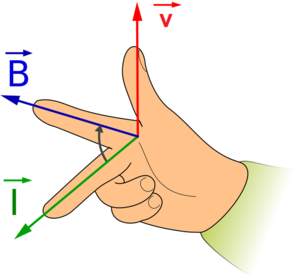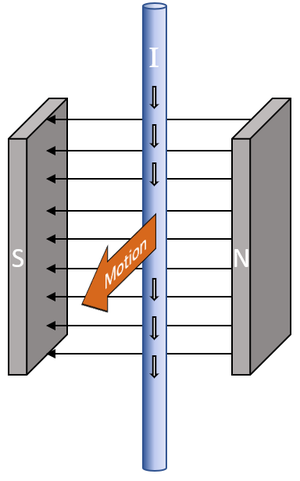Difference between revisions of "Generator Effect"
(→About The Generator Effect) |
|||
| Line 8: | Line 8: | ||
: The '''generator effect''' is used in [[Power Station|power stations]] to generate [[electricity]]. | : The '''generator effect''' is used in [[Power Station|power stations]] to generate [[electricity]]. | ||
: The direction of the [[Electrical Current|current]] induced is shown by the 'right hand generator rule'. | : The direction of the [[Electrical Current|current]] induced is shown by the 'right hand generator rule'. | ||
| + | : The '''generator effect''' is used in [[alternator]]s and [[dynamo]]s. | ||
{| class="wikitable" | {| class="wikitable" | ||
|- | |- | ||
Revision as of 11:30, 5 March 2019
Key Stage 4
Meaning
The generator effect is the current induced in a wire when it is in the region of a changing magnetic field.
About The Generator Effect
- When a wire is moved through a magnetic field at right angles to the field lines it causes a potential difference across the wire. If that wire is part of a circuit this will induce a current.
- The generator effect takes place whenever a wire is in a changing magnetic field. This change can be due to the relative motion of the wire and magnet or by the magnetic field changing over time.
- The generator effect is used in power stations to generate electricity.
- The direction of the current induced is shown by the 'right hand generator rule'.
- The generator effect is used in alternators and dynamos.
|
\(\overrightarrow{B}\): First finger field. \(\overrightarrow{v}\): The motion of the wire. \(\overrightarrow{I}\): Second finger current. |
This diagram shows that as the wire is moved through the magnetic field a current can be generated. |

